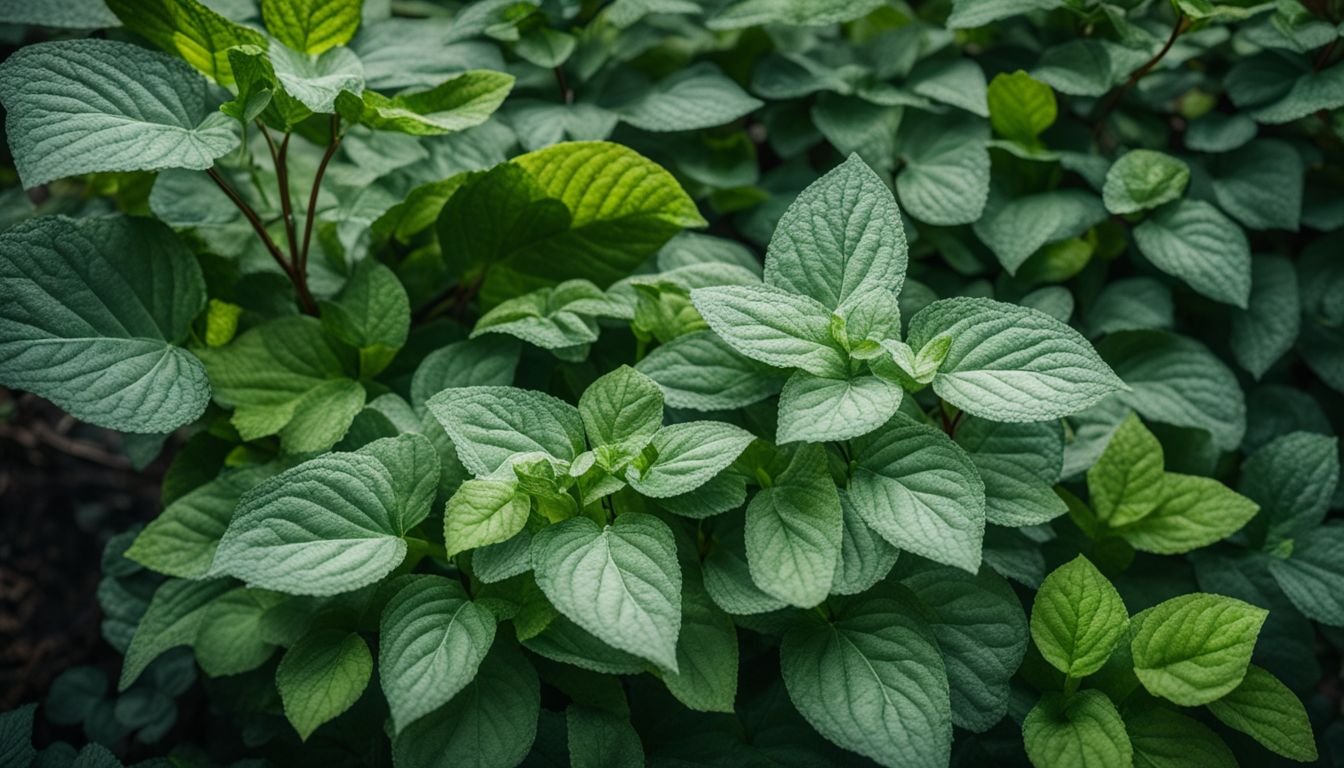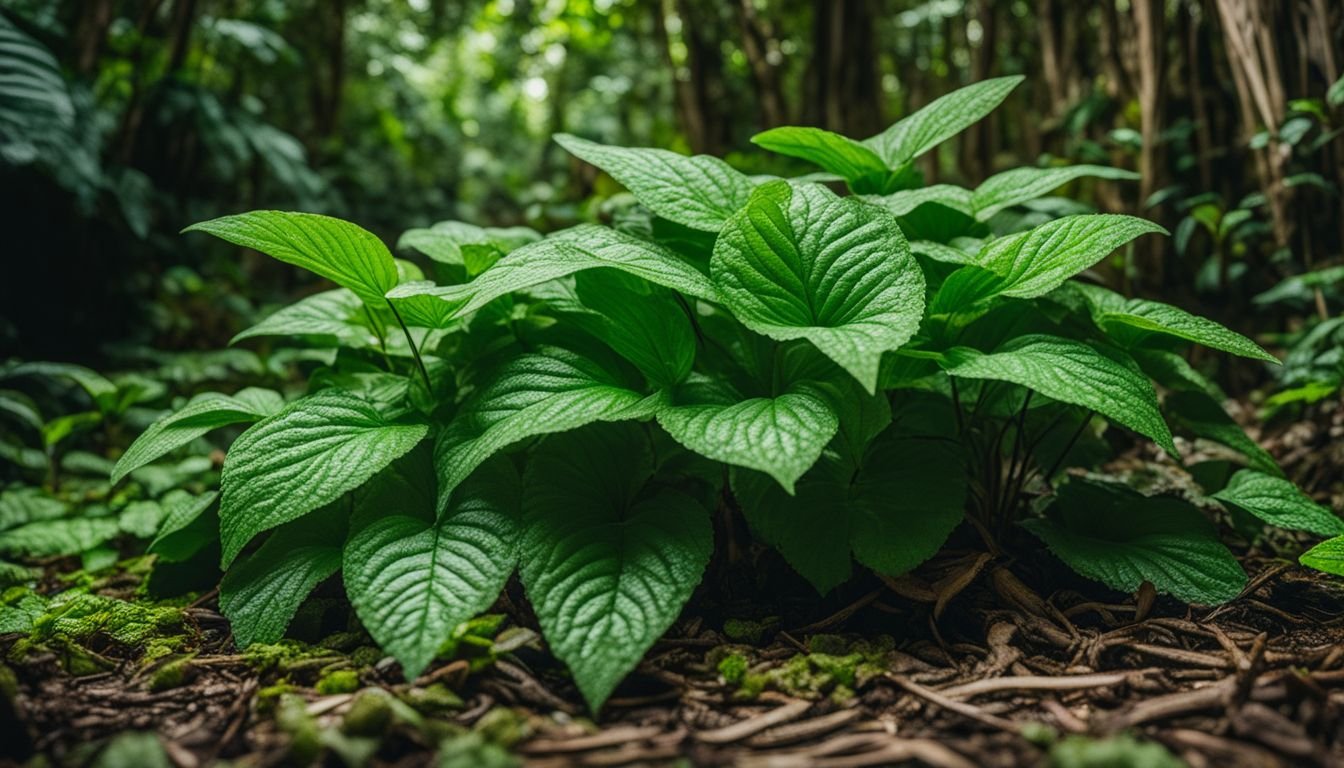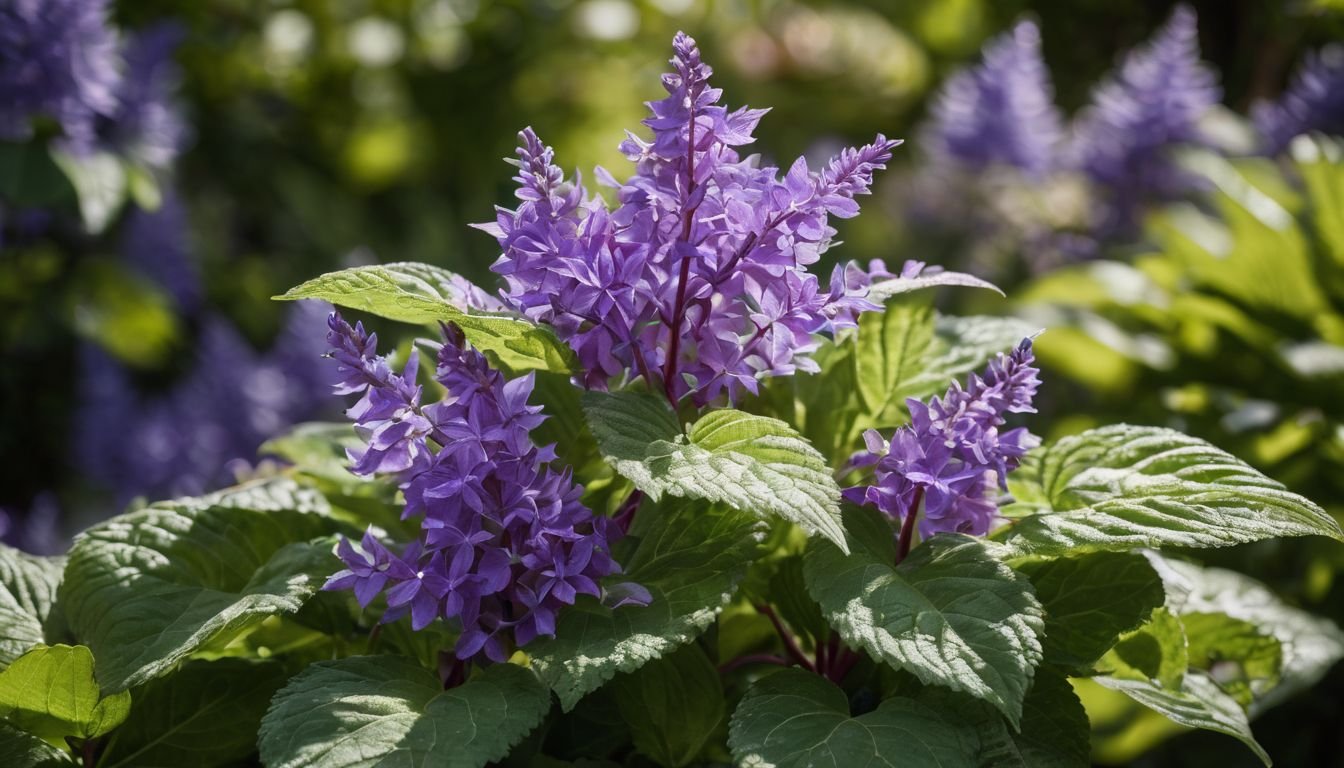Finding the right fit for your Aussie garden can be a bit like searching for a needle in a haystack, especially when you’re after something low-maintenance yet striking. We all dream of having that backyard oasis – lush and full of life through every season – but we’re often up against it with challenges like dry spells or those tricky shady spots where barely anything seems to grow.
We’ve done the hard yards, combing through plant options trying to find a gem that overcomes these hurdles without skimping on charm. Our quest led us to the stunning Plectranthus Argentatus – an evergreen beauty native to our own shores with eye-catching velvety silver foliage.
What’s impressive about this little ripper is its knack for toughing out drought conditions, making it a top pick for Aussies wanting both toughness and visual appeal in their gardens.
Dive into our article as we explore how Plectranthus Argentatus doesn’t just make do, but actually flourishes in both the shade and under our harsh sun – proving itself as a top-notch contender for any Australian backyard.
So, let’s crack on and unlock the secrets behind nurturing Plectranthus Argentatus in your own slice of paradise down under. Stick around; you might just find your garden’s new standout feature!
Key Takeaways
- Plectranthus Argentatus thrives in both full sun and partial shade, making it a versatile addition to any Aussie garden. Its drought tolerance allows it to withstand dry spells with ease.
- This native shrub sports unique silver – velvet broad leaves that catch the eye, creating an attractive contrast in mixed borders or adding sophistication to mediterranean style gardens.
- In winter, Plectranthus Argentatus surprises gardeners with sporadic white flowers, enhancing its appeal and offering seasonal interest when many other plants may not be flowering.
- It requires well – drained soil for optimal growth and benefits from tip pruning to maintain bushy growth and encourage more abundant flowering.
- With low frost tolerance, protection during cold nights is essential for those growing it in cooler regions or considering moving potted plants to warmer spots when needed.
Description of Plectranthus Argentatus

Plectranthus Argentatus captures the eye with its stunning silver-velvet leaves, a true spectacle in any garden. Its sporadic white flowers add a delicate touch, enhancing its overall charm and appeal.
Silver-velvet broad leaves
We often find ourselves drawn to plants that stand out, and the silver-velvet broad leaves of Plectranthus argentatus surely catch the eye. These uniquely attractive leaves add a shimmering touch of silver-grey tones to any garden setting.
They possess a velvety texture that not only looks stunning but also feels delightful to touch. Ideal for creating contrast in mixed borders or mediterranean style gardens, these leaves bring an element of sophistication and depth when paired with other perennials.
Growing this native Australian shrub in well-drained soil enhances its drought tolerance, making it a resilient choice for gardeners who prefer low-maintenance yet visually appealing plants.
Whether positioned under full sun or partial shade, these broad leaves maintain their luscious colour and texture. For those aiming to achieve a semi-tropical look or simply spice up their cottage garden without committing to high water usage, incorporating Plectranthus argentatus offers an effective solution.
Tip pruning helps maintain their lush appearance and encourages denser growth. This practice also supports the spectacular display of sporadic white flowers that complement the silvery foliage beautifully during winter months, adding seasonal interest to your garden.
We embrace these practices not just for aesthetic purposes but also to ensure our beloved plant thrives year after year.
Sporadic white flowers
In the heart of winter, our beloved Plectranthus argentatus surprises us with sporadic bursts of white flowers. These blooms emerge as sage-like spires, adding an unexpected flourish to the garden during colder months.
It’s a delightful contrast against the plant’s silvery-grey tones, creating a stunning visual interest in semi-tropical gardens or any outdoor space craving a touch of elegance.
The beauty doesn’t end with its velvety foliage; the ‘White Cascade,’ another name by which this flowering shrub is known, serves brilliantly as path edging. Its ground covering habit ensures it fills spaces beautifully without overtaking them, making it an exceptional choice for well-drained soils near trees or even in container planting.
With regular summer watering and partial shade conditions met, these plants thrive and sprinkle their charm effortlessly.
Caring for Plectranthus argentatus rewards us not only with its drought-tolerant leaves but also with these sporadic white gems that brighten up dim winter days. Tip pruning keeps them bushy and encourages more prolific flowering—truly a sight to behold and a testament to nature’s resilience and surprise elements.
Gardening friends should consider this hardy yet delicate-looking shrub for added texture and year-round interest in their green havens.
Natural Habitat of Plectranthus Argentatus
 Plectranthus Argentatus thrives in the unique landscapes of Queensland and New South Wales, where its roots grip tightly to rocky outcrops and rainforest floors. This resilient shrub adapts seamlessly to its surroundings, reflecting the diverse ecosystem of Australia’s eastern coastlines.
Plectranthus Argentatus thrives in the unique landscapes of Queensland and New South Wales, where its roots grip tightly to rocky outcrops and rainforest floors. This resilient shrub adapts seamlessly to its surroundings, reflecting the diverse ecosystem of Australia’s eastern coastlines.
Native to rock outcrops and rainforests of Queensland and New South Wales, Australia
We find ourselves lucky to have the Plectranthus argentatus, a gem that calls the rock outcrops and rainforests of Queensland and New South Wales home. This native shrub thrives in its natural habitat, showcasing how adaptable and resilient Australian flora can be.
It’s fascinating to see how it flourishes in both dry shade areas and more humid conditions, proving its versatility.
Drawing inspiration from its native environment helps us better understand how to care for this plant in our gardens. Mimicking the conditions of its original surroundings allows us to appreciate not just its beauty but also its ability to withstand drought with minimal fuss.
With proper care, such as tip pruning and cutting back hard every 2 years, we ensure that it continues to thrive, contributing unique textures and colours with its silver-velvet leaves while supporting our local ecosystems.
Care and Maintenance of Plectranthus Argentatus
Taking care of Plectranthus Argentatus isn’t just rewarding; it’s also quite straightforward. We love how this plant adds a touch of silver elegance to our gardens, and with the right attention, it thrives beautifully.
- Ensure well-drained soil: This plant loves a spot where water doesn’t hang around too long. Setting it up near trees or in a container ensures it gets the drainage it needs to flourish.
- Position for partial shade: Too much sun can harm its stunning silver leaves, so we find spots that offer shelter from the harsh midday sun ideal.
- Water moderately: Its drought tolerance is impressive, but during long dry spells, we give it a drink to keep the soil slightly moist.
- Every 2 years, cut back hard: This might seem drastic, but cutting back promotes fresh growth and keeps your plant dense and lush.
- Regularly tip prune: Snipping off the tips encourages bushier growth and maintains its beautiful shape.
- Watch out for frost: Since frost tolerance is low, we protect our plants on cold nights or grow them in pots to move them to warmer spots when needed.
- Use as path edging or with perennials: Its unique look makes it perfect for edging paths or pairing with other garden perennials for stunning contrasts.
Exploring More Plants Similar to Plectranthus Argentatus
After diving into the care and maintenance of Plectranthus argentatus, let’s broaden our horizons by exploring other plants that share similarities with this stunning Australian native. Our love for gardening inspires us to seek out more plants that not only complement the silver-leaved beauty but also thrive under similar conditions. Here’s a curated list for fellow plant enthusiasts:
- Lavender (Lavandula) – Known for its fragrant purple flowers and silvery foliage, Lavender thrives in well-drained soil and full sun, making it a perfect companion to Plectranthus argentatus in drought-tolerant gardens. Regular pruning helps maintain its shape and encourages blooming.
- Russian Sage (Perovskia atriplicifolia) – This hardy plant adds a soft blue hue to the garden with its small flowers and silver-grey leaves. It requires minimal water once established, preferring full sun exposure to flourish alongside our featured shrub.
- Dusty Miller (Senecio cineraria) – Dusty Miller stands out with its striking silver foliage, creating a beautiful contrast when planted next to Plectranthus argentatus. It enjoys partial to full sunlight and well-draining soil, proving resilient in dry conditions.
- Eucalyptus ‘Silver Dollar’ (Eucalyptus cinerea) – Offering both aromatic leaves and drought tolerance, Silver Dollar Eucalyptus can grow tall but also works as a stunning container plant if kept pruned. Its round silvery leaves draw parallels with Plectranthus argentatus’ velvety texture.
- Mexican Bush Sage (Salvia leucantha) – This sage variety features velvet-like green leaves underneath elongated spikes of purple flowers, creating an eye-catching display from late summer through autumn. It shares a preference for partial shade to full sun and well-drained soils, mirroring the needs of Plectranthus argentatus.
Conclusion
We’ve explored the unique beauty and resilience of Plectranthus Argentatus, a true jewel in Australian gardens. With its striking silver leaves and drought tolerance, it’s perfect for those seeking low-maintenance yet visually appealing plants.
Remember to give it partial shade and cut back every two years to keep it thriving. Whether you plant it near trees or use it as a container plant, Plectranthus Argentatus promises to add a touch of elegance to your outdoor space.
Let’s embrace this native gem and enjoy the lush, velvety texture it brings to our gardens.
FAQs
1. What makes Plectranthus Argentatus a good choice for gardens in dry areas?
Plectranthus Argentatus is drought tolerant, making it an ideal plant for gardens in areas that receive little rainfall. Its root system helps it survive dry conditions.
2. How often should I cut back Plectranthus Argentatus to keep it healthy?
You should cut back Plectranthus Argentatus hard every 2 years. This helps the plant stay healthy and encourages new growth with those velvety silver leaves we all love.
3. Can you find Plectranthus Argentatus in herbaria?
Yes, specimens of Plectranthus Argentatus can be found in herbaria where they are studied and preserved due to their unique characteristics like glabrous (smooth) stems and drought tolerance.
4. What does “glabrous” mean when talking about Plectranthus Argentatus?
“Glabrous” means that parts of the Plectranthus Argentatus, such as its stems, are smooth and not covered with any hairs or fuzz, giving them a distinctive feel and appearance.
